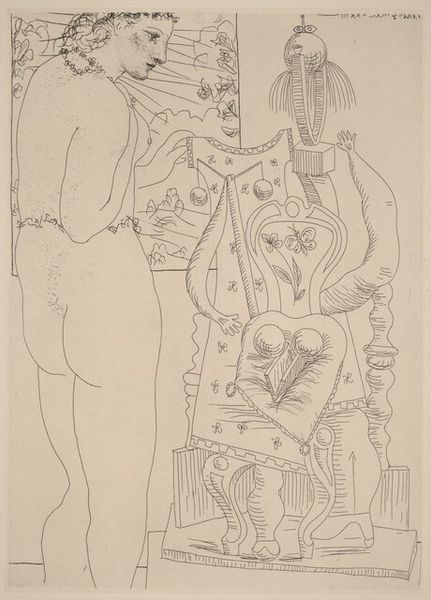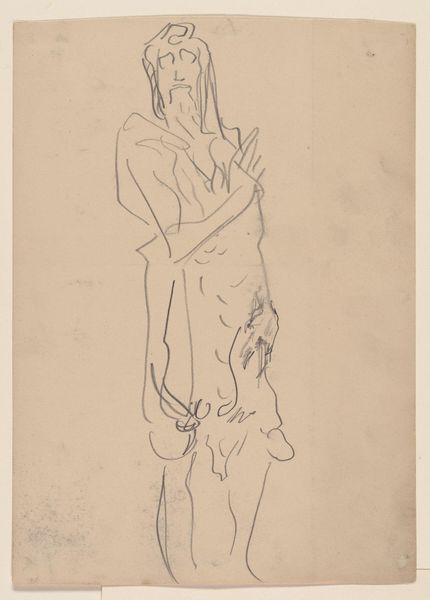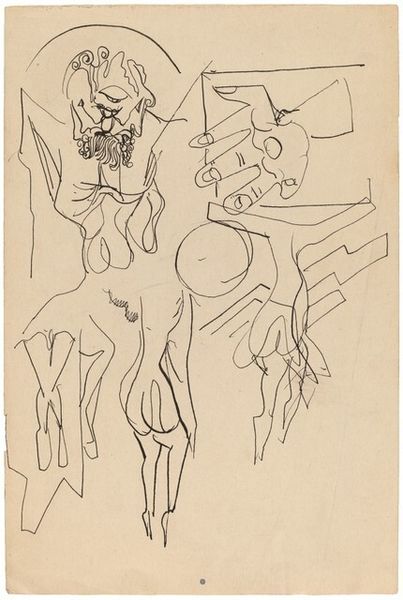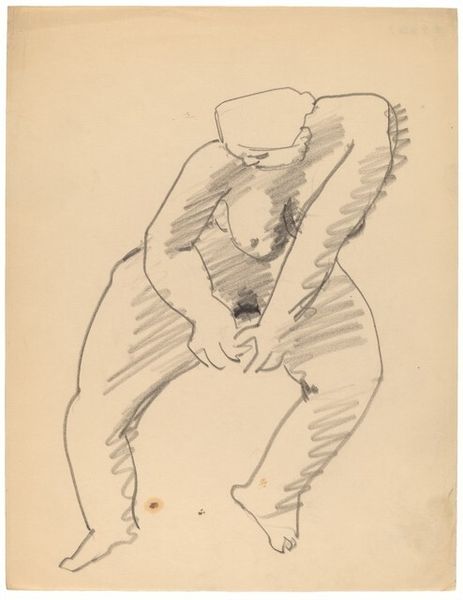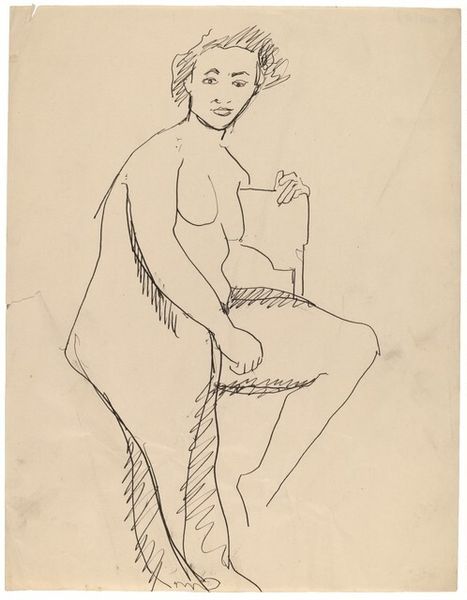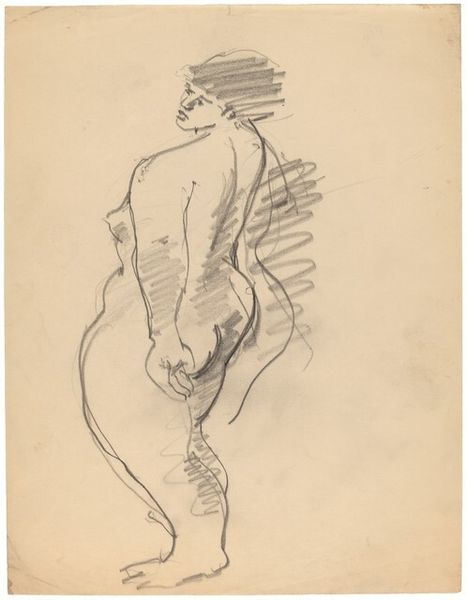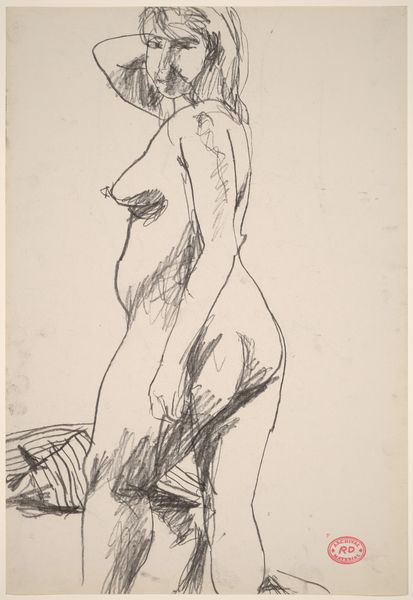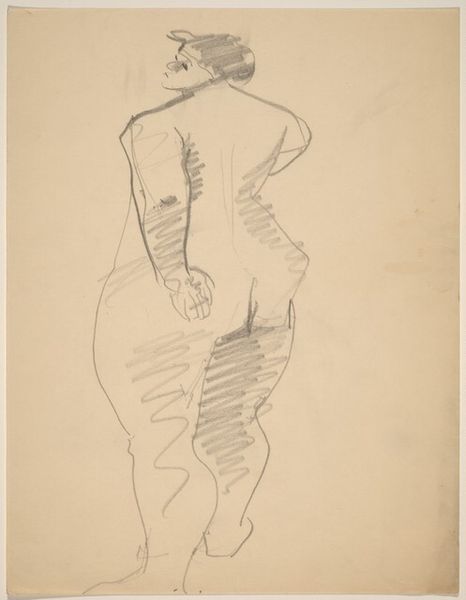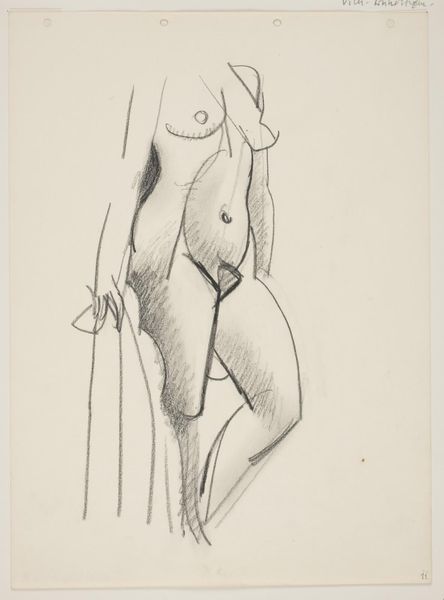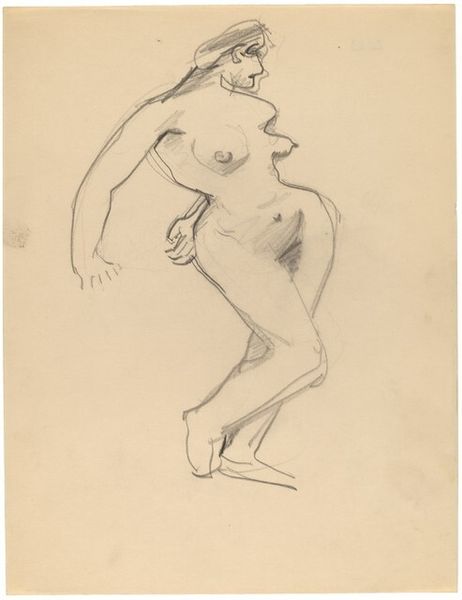
drawing, ink
#
drawing
#
ink drawing
#
figuration
#
ink
#
abstraction
Dimensions: overall: 30.5 x 22.8 cm (12 x 9 in.)
Copyright: National Gallery of Art: CC0 1.0
Editor: Here we have Rothko's ink drawing, "Abstract Figural Composition." The line work feels tentative, searching almost. It’s a body, but pulled apart, reassembled…What can you tell me about this piece? Curator: Look at the *process* of this piece. The ink, the rapid, almost frantic marks…it's a record of the artist’s labor. Consider how ink, a readily available and relatively inexpensive material, democratizes art making. It challenges notions of artistic preciousness. What's your take on that? Editor: So, the medium itself disrupts conventional boundaries…But the figure – it's so disjointed. How does that fit in? Curator: Exactly. Think about the cultural context. This wasn’t painted in a vacuum. This fractured figure, constructed from layered ink strokes, reveals the artist's grappling with contemporary ideas. Could the form's deconstruction be mirroring a broader social fragmentation or upheaval, represented by an inexpensive resource, such as ink? Editor: Interesting. The "how" and "why" of choosing ink becomes just as important as the final image itself. Curator: Precisely. And where might this drawing have been made, who might it have been made for? These questions surrounding production and consumption shape our understanding as much as the subject matter. Editor: I hadn't thought about it that way. Focusing on the material realities, not just the symbolism, adds so much depth. Curator: Art making always occurs within – and responds to – material constraints. By foregrounding the process and materials, we move away from purely aesthetic interpretations and engage with art as a form of labor and social commentary. Hopefully, you'll consider how labour might influence the reading of paintings next!
Comments
No comments
Be the first to comment and join the conversation on the ultimate creative platform.

